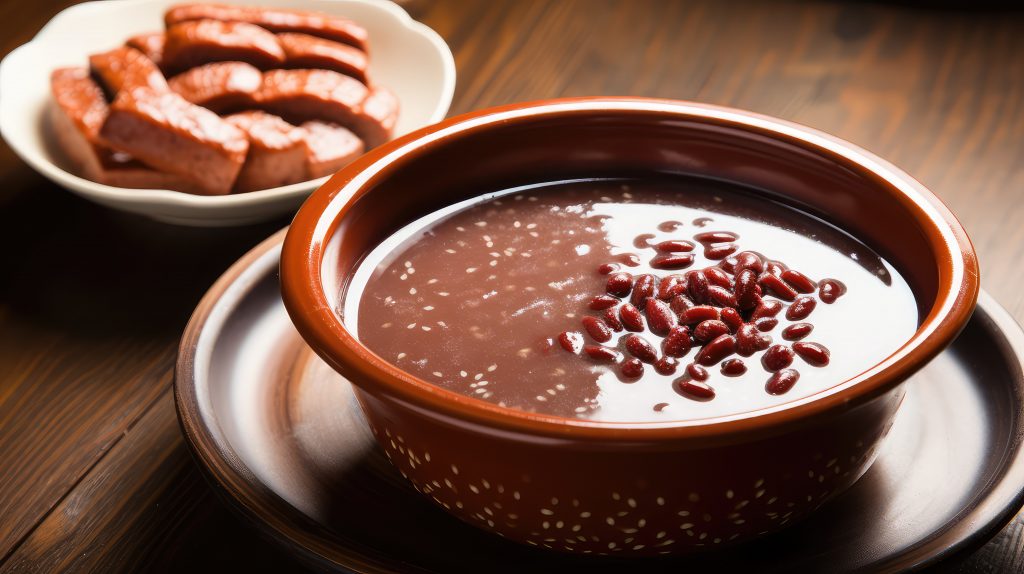
In Traditional Chinese Medicine (TCM), Dampness is seen as one of the most common and persistent external pathogenic factors, ranking alongside Wind in its ability to disrupt health. The other major external pathogenic factors—often referred to as the “Six Evils” —are Cold, Dryness, Fire (Heat), and Summer-Heat. Each of these can invade the body singly or in combination, disrupting its balance and contributing to a wide range of health problems.
Dampness can arise from external sources, such as living in a humid climate, or develop internally due to factors like poor digestion, inactivity, or frequent consumption of rich, greasy foods. It carries a distinct quality—heavy, sticky, and slow—and tends to weigh the body down, creating a sense of stagnation. This sluggishness can disrupt the flow of Qi and Blood and may interfere with healthy digestion and elimination.
As a Yin pathogen, Dampness carries a cool, heavy quality. It can diminish the body’s Yang energy—the force behind warmth, movement, and transformation. Over time, this imbalance may leave you feeling heavy, sluggish, and mentally drained.
Although Dampness is most common in late summer—the season when it naturally gathers—it can appear at any time of year.
I never realized this before, but it finally made sense why I always felt more tired and sluggish around this time. After my TCM practitioner explained it, I started paying more attention and consciously cut back on cold and overly sweet foods, especially in late summer. Honestly, I noticed a real difference—I felt lighter, more energized, and less bloated just by making these simple seasonal changes. As mentioned, Dampness can come from external sources like living in a damp or humid environment, which can gradually affect the body. Internally, a key factor is a weakened Spleen. In Traditional Chinese Medicine, the Spleen is responsible for transforming and transporting fluids. When Spleen Qi is weak or sluggish, fluids can build up, eventually turning into Dampness inside the body.
When Does Dampness Show Up?
As mentioned, Dampness is most common in late summer, the season connected to the Earth element and its natural moisture, but it can show up anytime during the year. People living in damp, rainy, or coastal climates often experience Dampness more frequently. Internally, a primary cause of Dampness is a weakened Spleen. In Traditional Chinese Medicine, the Spleen is crucial for fluid metabolism—transforming and transporting nutrients and fluids from food and drink. When Spleen Qi is weak, these fluids may not be processed efficiently, causing them to accumulate and form Dampness within the body.
Common Signs of Internal Dampness
- A feeling of heaviness in the body or limbs
- Mental fog or lack of clarity
- Fatigue and low motivation
- Bloating, sluggish digestion, or sticky stools
- Swelling (edema) or water retention
- Cloudy urine, excess vaginal discharge, or phlegmy congestion
- A thick, greasy tongue coating
Foods That Can Help With Dampness
Red bean soup dessert also known as 紅豆沙, is considered helpful for addressing dampness in Traditional Chinese Medicine (TCM), especially when combined with ingredients like barley or tangerine peels (陳皮). I like to use both.
My mom used to make this soup for us when we were little, and now it’s something I prepare for my own family. In Traditional Chinese Medicine (TCM), red beans—also known as adzuki beans—are valued for their ability to help the body expel excess moisture, or dampness. This type of internal damp buildup can show up as a heavy sensation in the body, fatigue, bloating, water retention, and sluggish digestion.

Red bean soup is often used as part of dietary therapy to support the Spleen and Kidney Qi, which play key roles in fluid metabolism and digestion. It’s both nourishing and functional. To enhance its damp-draining properties, I sometimes add ingredients like barley, which strengthens the soup’s ability to gently remove excess fluids. A bit of dried tangerine peel (陳皮) adds warmth and helps move Qi, improving circulation and digestion while also helping to clear phlegm and dampness from the upper abdominal area.
When made with minimal sugar and served warm, this soup becomes a wonderful, nourishing way to help the body stay light and balanced—especially during humid weather or when digestion feels sluggish.
Other Foods That Help Clear Dampness
If you’re looking to reduce internal Dampness through diet, here are some supportive foods and herbs:
- Job’s Tears (coix seed / 薏米) – a traditional Damp-draining grain
- Mung beans – slightly cooling and great for detox
- Pumpkin, lentils, and adzuki beans – Spleen-supportive
- Spices like ginger, cardamom, and cinnamon – warm and activate Qi
- Dandelion greens or radish – mildly bitter foods that help drain excess fluids
- Root and Starchy Vegetables: Carrots, sweet potatoes, yams, parsnips, pumpkin, turnips, and radishes (including daikon) are recommended, particularly when cooked
- Leafy Greens and Fibrous Vegetables: Kale, mustard greens, dandelion greens, spinach, celery, asparagus, watercress, cabbage, and kohlrabi support digestion and help clear dampness
- Herbal Teas: Ginger tea, green tea, oolong, jasmine, chrysanthemum, cardamom, fennel, peppermint, and lotus leaf teas are traditionally used to manage dampness
Lifestyle Tips to Reduce Dampness
Food is just one piece of the puzzle. Here are a few habits that also support Dampness relief:
- Move regularly to support Qi and fluid circulation
- Avoid overeating or late-night snacking, which burdens the Spleen
- Choose warm, cooked meals instead of raw or cold foods
- Protect yourself from damp environments—avoid walking barefoot on cold floors or sitting on wet ground
- Reduce overthinking or worry, which in TCM weakens the Spleen
Understanding dampness has truly changed the way I eat and how I feel year-round. It’s not about strictly avoiding every “cold” or “damp” food, but rather about tuning in to your body and nurturing it with gentle, nourishing choices. Something as simple as making a warm bowl of red bean soup for the family can become a comforting ritual—one that clears away mental heaviness and leaves you feeling lighter, clearer, and more centered from the inside out.